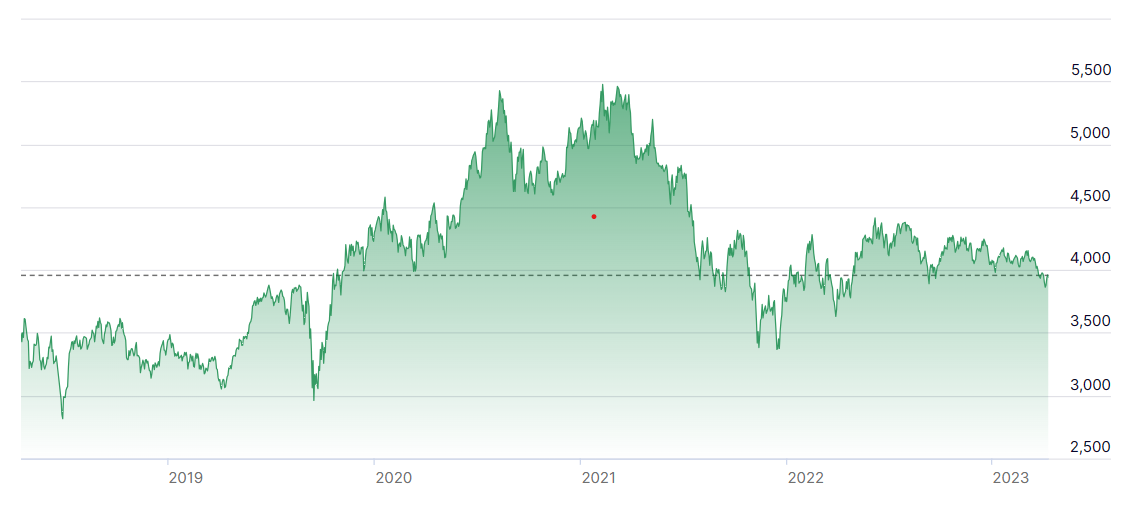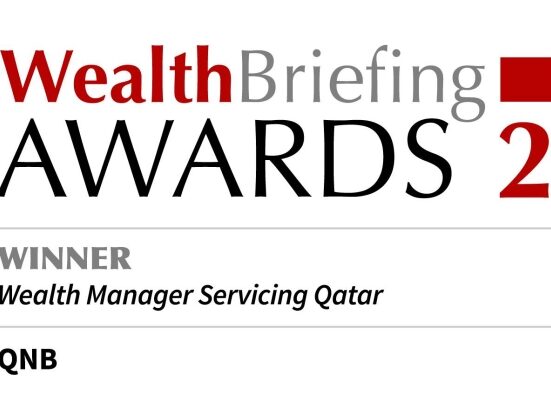Table of Contents
Show more
Show less
Capital at risk. All investments carry a varying degree of risk and it’s important you understand the nature of these. The value of your investments can go down as well as up and you may get back less than you put in. Where we promote an affiliate partner that provides investment products, our promotion is limited to that of their listed stocks & shares investment platform. We do not promote or encourage any other products such as contract for difference, spread betting or forex. Investments in a currency other than sterling are exposed to currency exchange risk. Currency exchange rates are constantly changing which may affect the value of the investment in sterling terms. You could lose money in sterling even if the stock price rises in the currency of origin. Stocks listed on overseas exchanges may be subject to additional dealing and exchange rate charges, and may have other tax implications, and may not provide the same, or any, regulatory protection as in the UK. Accurate at the point of publication.
Investing in healthcare offers a broad spectrum of opportunities, from drug manufacturers to care providers to health insurance companies.
The Covid-19 pandemic created unprecedented challenges for the healthcare sector, with global spending on health hitting $9 trillion, according to the World Health Organisation. Put into context, this was more than 10% of global gross domestic product.
Recent events aside, healthcare has always been big business, and it’s likely to stay that way thanks to ageing populations and continuous medical advancements. According to the US health institute IMHE, global health spending is forecast to rise by more than 40% over the next two decades, reaching £1,500 per person by 2050.
Given this context, investors may be wondering how to add healthcare exposure to their portfolios. There’s certainly a diverse array of healthcare-related companies to choose from, as well as broader-based healthcare funds.
To help investors navigate the options, we take a closer look at investing in healthcare.
What are healthcare stocks?
The healthcare sector incorporates a multitude of different specialities, but some of the largest include:
- Drug-makers: companies that develop and manufacture pharmaceutical drugs to treat or prevent diseases and infections.
- Medical device providers: companies that design and manufacture medical tests, instruments and equipment for medical research and development, such as syringes, joint prostheses and patient monitors.
- Health insurance providers: companies that offer health insurance plans for individuals and employers to help meet the cost of private healthcare.
- Medical services providers: these include hospital and diagnostic centre operators, nursing and care home providers, physicians and pharmacies.
How has the healthcare sector performed?
The healthcare sector has experienced mixed fortunes over the past few years, peaking during the pandemic but struggling to maintain these gains.
Christopher Rossbach, chief investment officer at J Stern & Co, says: “Sector performance since 2021 has been significantly impacted by pandemic factors, from the closures of hospitals to [delays in] non-urgent treatment, as healthcare systems prioritised Covid patients.
“Today the healthcare system is moving towards normality, but the accumulated Covid-related backlog is likely to keep the demand for some healthcare services at elevated levels.”
The graph below shows the performance of the Nasdaq Biotech Index (NBI), which tracks a basket of biotech and pharma companies listed on the Nasdaq stock exchange.

Source: Nasdaq Inc.
Dr Gareth Blades, analyst at Amati Global Investors, says: “The last couple of years have been driven by Covid-19, which catalysed more interest in the sector. NBI performance peaked in August 2021, less than a year after the first emergency use approval of the Pfizer/Biotech and Moderna Covid-19 vaccines.
“Since then, the NBI has given back most of these gains as the outsized rewards for treating the Covid-19 pandemic have dissipated. Added to this, the industry has been impacted by the downturn in all forms of financing.
“The disruption from the collapse of Silicon Valley Bank only added to this, as companies have paused investment plans with a view to refocusing drug pipelines and directing more resources on the highest value or later stage programmes.
“While pockets of outperformance clearly remain, the depressed valuations of many companies make for a great stock-picking environment.”
Liz Klein, investment director at Calculus, also highlights financing as a constraint to the recent performance of the sector: “The listed markets have faced challenges with relatively poor returns and few initial public offerings.
“In contrast, the private markets have experienced success as companies have been raising funds privately rather than going public. Larger venture capitalists have not been exiting investments due to this trend thus the cycle of cash has been hampered.”
Why invest in healthcare?
As an essential service, healthcare is a defensive sector that offers the potential for consistent returns regardless of macroeconomic conditions. It can also help to diversify a portfolio by counterbalancing more cyclical growth-type stocks.
Dr Blades says: “One of the benefits of investing in healthcare is the very broad opportunity set that is available, depending on your risk appetite. It’s a sector that offers exposure to steadier large-cap dividend payers as well as the riskier leading edge of therapeutic innovation at the lower end of the market cap scale.”
The sector is also forecast to enjoy strong growth over the next decade and beyond. Mr Rossbach says: “The biggest drivers of the growing demand for healthcare services are ageing populations, rising incomes and higher expectations for quality of life, both in developed and emerging markets.
“We believe this structural trend of rising demand will continue for many years to come. Innovation and improvement of treatments to meet unmet medical needs also drive value-added benefits by saving more lives and lowering the overall cost of care.”
Ms Klein echoes this view: “People are living longer but are not necessarily healthier in old age. This has led to an increase in diseases of ageing which require solutions.
“Governments are also unable to manage healthcare in the same traditional way, creating a requirement for advancements in healthcare, disease management and digital innovation. These trends present significant investment opportunities.”
What are the risks of investing in healthcare?
One of the key challenges is the substantial investment required to fund the research, development and regulatory approval of new drugs.
Ms Klein says: “Healthcare investments involve inherent risks and long timeframes. Only around 10% of drugs that begin clinical development make it to market, and the average time to bring a drug to market is 15 years.”
As a result, the success or failure of clinical trials can lead to significant volatility in share prices. Shareholders in pharma giants Eli Lilly and Novo Nordisk were rewarded with a one-day share price gain of 15% in August on the back of promising developments of their weight loss drugs.
Conversely, US biopharma company Acelyrin suffered an eye-watering drop of more than 60% in its share price over just two days after announcing that Izokibep, its lead prospect for inflammatory disease, had failed stage three of its clinical trial.
Dr Blades says: “Added to the drug development risks, there is the plain old risk of running out of money due to the timescales involved.
“But there is, of course, significant upside to be had when everything aligns. Remember that every blockbuster drug, those that generate at least $1 billion in sales annually, had the same types of risks associated with them.”
There are also question marks over the long-term sustainability of current healthcare expenditure for patients and governments alike. Mr Rossbach comments: “Healthcare expenditures in major developed economies have been rising above GDP.
“Rising costs have put pressure on governments and private payers to seek price concessions through negotiation, tendering, value-based procurement and adoption of the use of generic and biosimilar drugs. This price pressure is not going away.”
Finally, healthcare companies face significant litigation risk. This year alone has seen UK pharma firms GSK and AstraZeneca spend millions of pounds defending lawsuits relating to potential side effects from their heartburn drugs.
What are the options for investing in healthcare?
There are a range of options available, from investing in individual healthcare companies to broader-based healthcare funds.
Investing in healthcare companies
Stern & Co’s Christopher Rossbach picks out Swiss-American small-cap Alcon. He says: “Alcon is the largest eye-care device company in the world. It provides equipment, consumables and lenses for cataract surgery, as well as contact lenses and ocular care solutions.
“Spun off from Novartis in 2019, the newly independent company’s operating margins have started to improve, and we expect the company to deliver superior revenue and earnings growth in the coming years.”
Mr Rossbach also highlights another US small-cap, Dexcom, which is a major manufacturer of continuous glucose monitors (CGMs). He comments: “Its state-of-the-art devices connect to patients’ smartphones to provide data and analytics that help diabetics to better manage and control their disease.
“The stock has recently taken a hit in fear of a broader use of the GLP-1 class of drug in diabetes treatment, which will reduce the total addressable market for CGMs. We believe that this fear is unfounded and that the current share price weakness presents a buying opportunity for long-term investors.”
Calculus’ Liz Klein points to UK small-cap Scancell as an interesting option: “Scancell recently achieved a significant milestone by validating its cancer vaccine platforms.
“They are conducting a trial to assess the effectiveness of their ImmunoBody DNA cancer vaccine in combination with standard-of-care checkpoint inhibitors [a type of immunotherapy] in patients with advanced unresectable [non surgically-removable] melanoma. Recently the company delivered early but very encouraging data.”
Ms Klein also highlights Spectral AI, a US small-cap company that offers artificial intelligence-based medical diagnostic services. She comments: “Spectral AI has been awarded a contract valued at up to $149 million by BARDA (Biomedical Advanced Research and Development Authority).
“This is a multi-year award and it places up to 30 DeepView devices at various burn centres and emergency rooms to support the study. This will enable Spectral AI to conduct health economic and outcome research to support broader clinical adoption of the DeepView System.”
Amati’s Dr Blades picks out US small-cap Intuitive Surgical: “The company is a leader in robotic assisted surgery; it created the segment and continues to innovate and execute ahead of rivals.
“Intuitive Surgical has continued to increase value from its flagship robot, da Vinci, through adding indications, instruments and accessories. Added to this, the company is driving expansion in the EU as well as uptake of the new systems, ‘Ion’, a flexible robot for lung biopsies, and ‘Single Port’, for narrow access surgeries.”
Dr Blades also points to US biotech firm Vertex Pharmaceuticals: “The company has an almost monopolistic cystic fibrosis therapy portfolio, being the first provider of disease modifying treatments in this space.
“Added to this, there is a broad and late-stage pipeline with transformative therapies for sickle cell disease and transfusion-dependent beta-thalassemia (TDT) up for regulatory review in December 2023 and March 2024.”
Investing in healthcare funds
Investing in healthcare funds provides investors with exposure to the sector through a ready-made, diversified portfolio of shares. Investors have the choice of actively-managed ‘stock-picking’ funds or passively-managed ‘tracker’ funds. All the data below is sourced from Trustnet.
Topping the list of actively-managed healthcare funds over the last five years is the AB International Health Care Portfolio fund. It’s achieved a five-year total return of 67% and has been a consistent top-quartile performer across one, three and five years.
Around two-thirds of the fund is invested in the US, with a particular focus on pharmaceutical and biotechnology companies. The largest holdings are currently US companies UnitedHealth and Eli Lilly, together with European companies Novo Nordisk and Roche.
Turning to passively-managed funds, the Xtrackers MSCI USA Health Care ETF (exchange-traded fund) has rewarded investors with a five-year total return of 59%.
It tracks the MSCI USA Health Care Index, comprising more than 70 large and mid-cap US healthcare companies. In line with the wider sector, it has suffered a small negative return in the last year.
How to invest in healthcare shares and funds
Many trading platforms offer the option to buy both UK and US shares and funds, as featured above. However, a higher trading fee may be charged on non-UK investments, in addition to a foreign exchange fee (typically 0.5% to 1.0%).
We’ve compared fees, amongst other criteria, in our pick of the best trading platforms. Investors may also want to consider holding their investments in a tax-efficient wrapper such as an Individual Savings Account (ISA) or Self Invested Personal Pension (SIPP).
To help with this, we’ve also compiled a guide to our pick of the best ISA providers and SIPP providers.
What’s the outlook for investing in healthcare?
We asked our experts to share their thoughts on the outlook for the healthcare sector.
Amati’s Dr Blades says: “I’m incredibly optimistic about the future of healthcare when I think about the level of sustained innovation. In the last year or so we’ve had major milestone approvals for Alzheimer’s disease and obesity.
“As is normally the case once landmark approvals happen, this spurs further competitive drug development in these areas. Over time one could expect more, and potentially better, disease-modifying interventions for these diseases to come to market.”
Calculus’ Liz Klein says: “The outlook for the healthcare sector is promising. There is a growing trend of increased investment by large corporations and a surge in mergers and acquisitions (M&A) involving innovative healthcare companies.
“This influx of investment and M&A activity is expected to drive growth in the healthcare sector for the next five years. Notably, the positive impacts of substantial investments in dementia-related research are starting to manifest, further contributing to the sector’s positive outlook.”
Finally, Stern & Co’s Christopher Rossbach says: “We believe the long-lasting impact of Covid-19 will be finally behind us by the end of the year, setting the scene for a return to the fundamental drivers of healthcare in 2024.
“The US election in November could cast some clouds over the pharma sector, however over the longer term, we remain positive on healthcare driven by the demand of an ageing population and continued innovation.”







